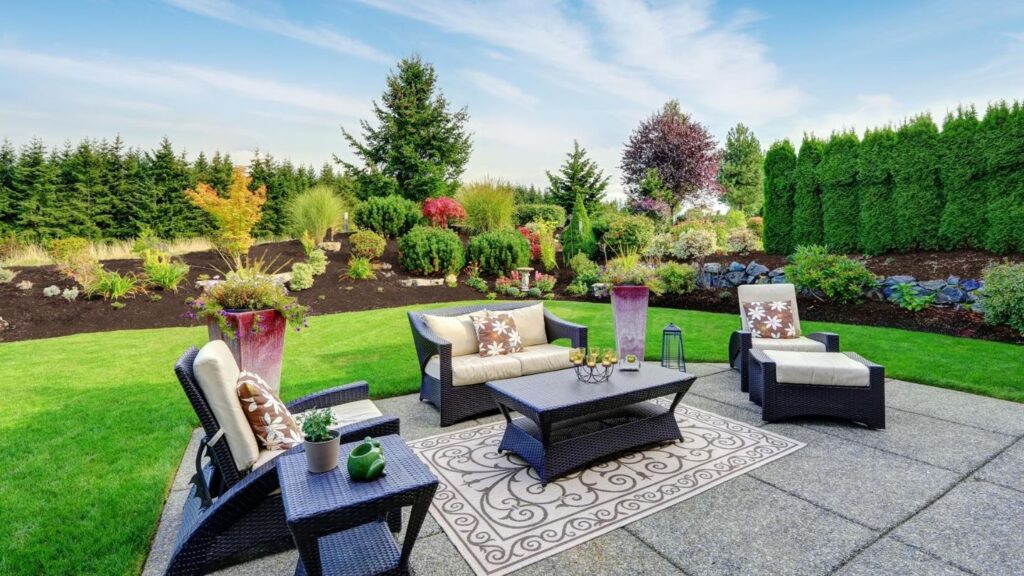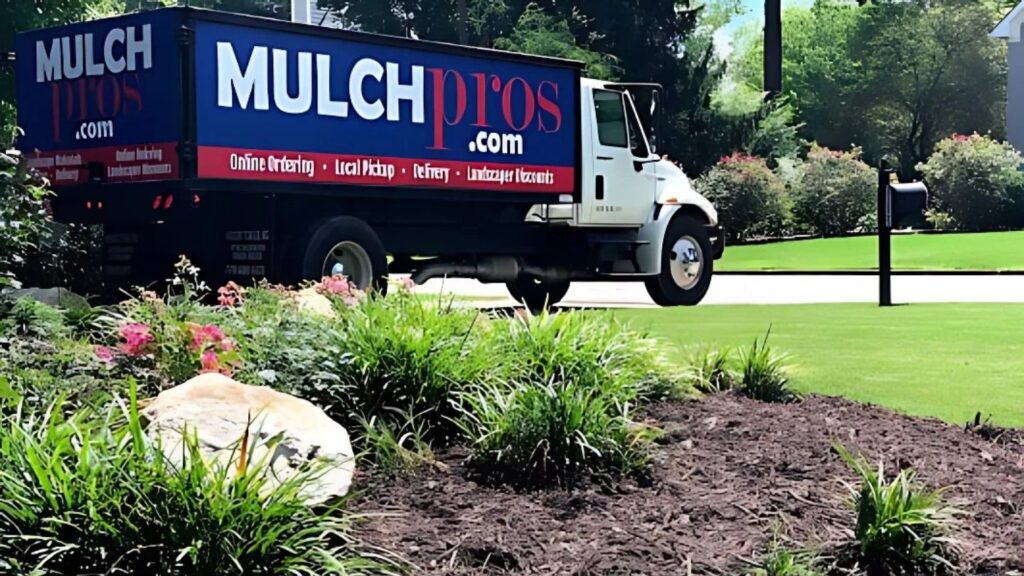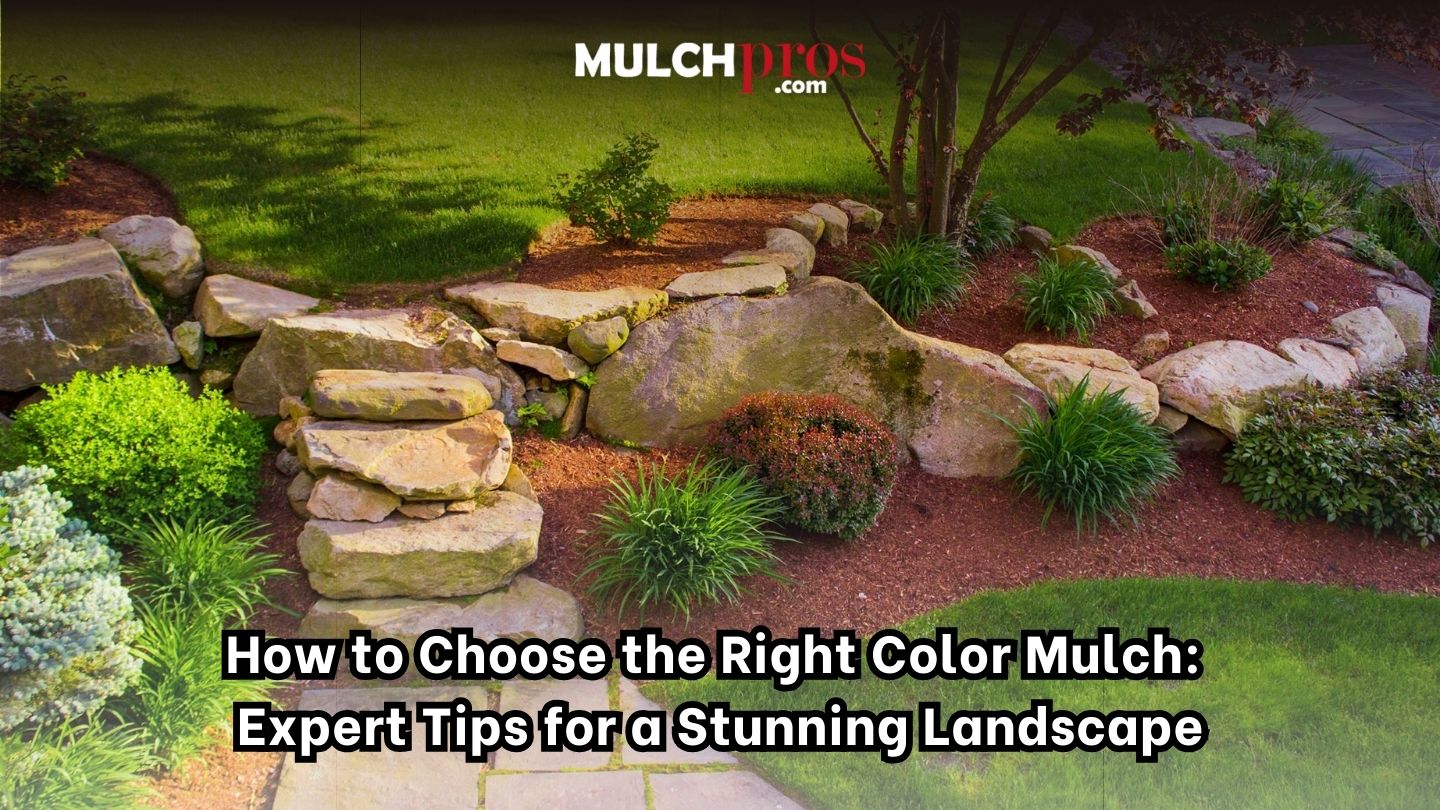Wondering how to choose the right color mulch for your garden? The color you select can significantly impact your landscape’s appearance and harmony with your home’s exterior. This guide will help you understand the practical and aesthetic considerations in choosing the best mulch color. We’ll discuss popular mulch colors, how they complement different garden styles and house colors, and their practical benefits.
Key Takeaways
- Choosing the right mulch color enhances landscape aesthetics and complements the colors of plants and home exteriors.
- Different mulch colors, such as brown, red, black, and gold, offer varying visual appeal and practical benefits, including moisture retention and weed suppression.
- Organic mulches improve soil health and structure as they decompose, while inorganic options, like river rocks and pebbles, provide low-maintenance, long-lasting solutions.
Introduction
The hue of mulch is crucial in enhancing your landscape’s visual appeal. Imagine walking through a garden where the vibrant colors of flowers and greenery are perfectly complemented by the mulch’s shade. Choosing the right mulch color can transform your outdoor space into a stunning scene.
Mulch color significantly influences landscape aesthetics and plant presentation. The right shade can elevate your garden’s overall attractiveness, creating a seamless and sophisticated ambiance. Whether you prefer natural tones for subtlety or bold contrasts for drama, mulch color is key to achieving your landscaping vision.
Colored mulches offer functional benefits, too. They help maintain soil moisture, deter weeds, and regulate soil temperature. Thus, selecting the right mulch color not only adds visual charm but also supports plant health.
Why Mulch Color Matters

Choosing the right mulch color is largely based on individual taste, as your garden serves as an extension of your personal aesthetic. Beyond just preference, different hues of mulch can substantially elevate a garden’s look by offering consistency and sophistication. Visualize how dark brown mulch could serve as an elegant canvas to highlight brightly colored flowers—creating not just a beautiful scene but also giving your outdoor space a transformative flair.
The visual appeal of your garden is significantly influenced by the color of the mulch you select. While deeper shades like black mulch amplify the intensity of colorful blossoms and greenery—allowing them to pop vividly—in contrast, paler varieties such as gold mulch bring forth an atmosphere that’s both radiant and inviting for anyone stepping into your garden oasis.
Popular Mulch Colors and Their Uses
Selecting the ideal color for mulch can be a crucial decision, as numerous attractive options are available. The most commonly selected colors of mulch consist of shades like brown, red, black, and gold. Each hue provides distinct advantages and contributes to the overall visual appeal of your landscape. Among these choices, red, brown, and black colored mulches are highly celebrated for their enhancement of landscape aesthetics.
Colored mulch is crafted through a process that includes grinding up trees and infusing them with various dyes to achieve an array of desired popular hues. Incorporating these colors into your garden space effectively defines planting areas while simultaneously boosting their aesthetic value. In what follows, we will delve into different tones provided by each type, providing guidance in making an informed selection based on specific landscaping needs or desires.
Brown Mulch
Brown mulch is a versatile choice that enhances the aesthetics of lush greenery. Made from materials like wood chips, composted leaves, and shredded bark, it ranges from light golden to deep dark brown.
Brown mulch acts as an excellent backdrop for both pale and richly colored foliage. It’s ideal for shrubbery perimeters, vegetable plots, and ornamental flower beds. It helps regulate soil temperature, retains moisture, and suppresses weeds while enriching the soil.
Whether your garden is formally structured or has a natural vibe, brown mulch integrates seamlessly and enhances the overall design.
Red Mulch
Red mulch boosts the visual impact of plant arrangements, especially in gardens with a warm palette. It highlights plants with yellow or green leaves and makes brightly colored flowers pop.
Red mulch helps retain soil moisture and suppresses weeds, simplifying garden upkeep. However, it may fade over time with constant sunlight exposure, requiring frequent replenishment.
Despite potential drawbacks, red mulch adds style and energy to any outdoor space, enhancing curb appeal and serving as a functional element in landscape design.
Black Mulch
Black mulch offers a sophisticated touch to garden layouts, fitting well with contemporary designs. Its bold look contrasts with foliage, boosting the aesthetic impact of any garden space.
Black mulch retains its stylish appearance for extended periods and aids in soil temperature regulation. However, overuse can lead to overly high temperatures, risking harm to sensitive plants.
Black mulch merges visual sophistication with practical gardening solutions, making it popular among horticulturists and landscape designers.
Gold Mulch
Gold mulch brings elegance to garden landscapes, providing a warm and welcoming ambiance. It accentuates the natural hues of plants, offering a rich background that pairs well with various shades.
Gold mulch helps maintain soil moisture levels and acts as a barrier against weeds. However, prolonged sunlight exposure may lead to fading.
Despite this, gold mulch is favored for its radiant presence and functional benefits, making it an appealing addition to any garden.
Matching Mulch to Your Home’s Exterior

When choosing mulch color, consider your landscape style, surroundings, and house color. The right shade can boost curb appeal and create a cohesive look.
Black mulch contrasts well with white or light gray homes, adding visual drama and contemporary flair. Brown mulch offers a classic or rustic charm, blending seamlessly with greenery and various exterior paints.
Red mulch energizes gardens and pairs well with beige or tan homes, creating striking accents. Gold mulch conveys warmth and complements plant colors, fitting various home exteriors.
Enhancing Garden Aesthetics with Colored Mulch

Choosing the right mulch color can significantly enhance your garden’s aesthetic appeal. Gold-colored mulch creates a warm, inviting ambiance, while darker shades like black provide a contemporary edge and make green foliage stand out.
Using different mulch colors can add visual interest and clearly define garden borders. Strategically layering multiple hues can create striking patterns and highlight specific plants, especially in larger gardens.
To maximize appeal, select mulch colors that harmonize with your plants and overall landscape theme. This thoughtful approach can transform your garden into a captivating and cohesive outdoor space.
Practical Considerations for Mulch Selection

The color of mulch significantly impacts soil temperature and plant health. Black mulch can increase soil warmth, benefiting heat-loving plants, but too much can harm tender seedlings.
Mulch colors influence plant vitality, soil warmth, and visual appeal. Organic mulches like wood chips or bark regulate soil temperature, retain moisture, suppress weeds, and enrich soil. Although they need more frequent replenishment, they promote better drainage and nutrient retention.
For optimal results, consider the type of mulch, regional weather, and replacement frequency. Apply mulch in mid-to-late spring for robust plant growth and long-lasting garden attractiveness.
Organic vs. Inorganic Mulch Options
Mulching options fall into two primary categories: organic and inorganic. Organic mulches, like wood chips, suppress weeds, retain soil moisture, and enrich the soil as they decompose. These mulches can be natural or dyed.
Organic mulches, such as straw and bark, provide numerous benefits, such as moisture retention, weed suppression, and soil enrichment. However, they decompose over time and require more frequent replenishment.
Inorganic mulches, like river rocks, pea gravel, and volcanic rock, also retain moisture and block weeds but are more durable and need less upkeep.
Choosing between organic and inorganic mulch depends on your garden’s needs and maintenance preferences.
Promoting Soil Health with Natural Mulch
Natural mulch, like tree bark and leaves, enhances soil health by breaking down and adding nutrients back into the earth. These organic mulches also deter weeds from invading garden spaces.
Bark mulch stabilizes soil temperatures, protecting plant roots from extreme heat or cold. It conserves soil moisture, reducing the need for frequent irrigation.
Brown mulch, sourced from renewable materials like natural bark and composted foliage, decomposes over time to feed plants and improve soil structure, drainage, and nutrient retention.
Incorporating natural bark mulch not only enhances visual appeal but also nurtures a healthy environment for plant growth and supports a thriving garden ecosystem.
Summary
Choosing the right color of mulch is essential for creating a stunning landscape that enhances the visual appeal of your garden. From brown mulch to red, black, and gold, each color offers unique benefits and aesthetic appeal. By considering factors such as your home’s exterior, plant colors, and practical needs, you can select the right mulch color for your garden.
Mulch not only adds style to your garden but also provides numerous practical benefits, such as moisture retention, weed suppression, and soil temperature regulation. Whether you choose organic or inorganic mulch, the right mulch selection can significantly improve the health and appearance of your garden. Trust Mulch Pros Landscape Supply to provide you with high-quality mulch products and exceptional customer service to help you achieve a beautiful and thriving landscape.
For those in need of landscape supply in Alpharetta, Mulch Pros Landscape Supply offers reliable and prompt delivery services.


